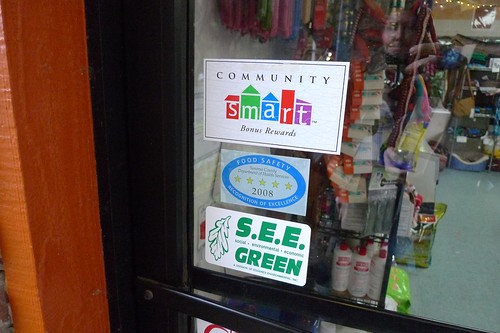Today, Eiso Kant, the co-founder of Twollars announced that he had been working lately on a multi-currency version of Twollars, and that “soon everyone can start their own currency on Twitter”. This could be an interesting development for Twollars, which have so far acted as a multiplier and allocator of the generosity of the sponsors US dollars donations: Twollars are backed by commitment of sponsors to donate real US dollars to the charity of the donator’s choice (the first $1,000 was sponsored by Eisomac Ltd, the creator of Twollars themselves, and it seems they are now looking for a new sponsor for the next $10,000).
We will have to wait until more details emerge, as there are many different ways a multi-currency platform could be implemented.
In the meantime, I’d like to share some thoughts on the concept of a Twitter Time Bank, something I’ve been thinking about in the last few days.
Overview
The goal of the Twitter Time Bank is to allow people to bring the reality to the idea that “time is money”, and allow anyone to issue their own time-based money they can use to pay others for products/services or to donate to others.
Here is an example of how it would work:
“(from @glebleu) give @receiver 1 hr for …” would give the receiver the right to schedule 1 hour of my time with him/her/them, through an operation called “redeeming”. Alternatively, they could transfer the time/money I gave him/her/them to someone else via the following Tweet: “(from @receiver1) give @receiver2 1 @glebleu hr for …” (receiver1 gives one hour of glebleu to receiver2).
Give syntax
Anyone is free to give their own time money to anyone else they want for whatever reason they want. They can give as much as they want (but there is an obvious limit, as each person’s time is limited). Anyone is also free to transfer other people’s time money they received to someone else. Here is the syntax:
Short syntax (@giver = @issuer) “give @receiver 5 hr ….” or “give @receiver 10 mn …”
Long syntax (@giver <> @ issuer) “give @receiver 5 @issuer hr” or “give @receiver 10 @issuer mn”
units supported: hr or mn
Accept syntax
Although you are free to give your time money to anyone for something, they are also free to acknowledge it or reject it. Acknowledgment would be done via the following Twitter syntax:
Short syntax: (@issuer = @giver) “accept 1 @giverissuer hr for …”
Long syntax: (@issuer <> @giver) “accept 1 @giver hr from @issuer for …”
Creating fungibility with community currencies
“Fungibility is the property of a good or a commodity whose individual units are capable of mutual substitution.”
Personal time money is hard to get accepted, obviously. With the above scheme, each time you are given some time money, you need to review the issuer for the value of his/her time to you and his/her creditworthiness.
To make personal time money useful, we need to make it fungible, but obviously all people’s time is not fungible. It is only within specific groups/communities that it may be.
To create mutual substitution, we need to allow people to spontaneously mutually agree to make their time money substitutable with one another. This agreement is a currency. In Twitter terms, @user1, @user2, etc. create a community whose currency is for instance called #bernal (say for the Bernal Heights neighborhood in San Francisco to support neighborhood “barn raising” events). In the community currency configuration, the community admin can decide:
- how people can be accepted in the community (ex. unanimous vote, cooptation from a minimum number of existing community members, verification of affiliation, etc.)
- the limit on each community members’ un-redeemed issued time.
- whether the currency can be sold for US$ to highest bidder (note that there is no way to prevent it from happening, so it’s better for the process of buying/selling currency for US$ to happen in a way that can be tracked and users protected from theft).
Once this is set up, community members can issue community currency backed by their own personal time money. For instance, if I’m a member of #bernal, when I tweet “give @receiver 1 #bernal hr for…”, I automatically have an additional @glebleu hr that is accounted for in my un-redeemed issued time. If I exceed the personal issuing limit set for my community, the issuance is rejected (the received can’t accept it).
Web service
A Web service would provide a Web version of give and accept actions, as well as the following actions:
- reports:
- un-redeemed issued time,
- un-redeemed (but scheduled) issued time,
- total redeemed issued time
- search profiles of people that you can redeem your personal money or community currency with
- request redemption (schedule time & location, or redeem for US$)
- confirm redemption
- bid in US$ for redeemable personal time money or community currency
- personal profile/preferences
- auto-accept given money (default is no for personal time money, can be configured on a per community currency basis)
- authorize personal time money issued to be sold for US$ to highest bidder (default is no, but there is no real way to prevent it to happen)
- community currencies joined
- schedule w/ booked time.
- geo location, services/products provided for 1 hr, delivery (F2F, online), etc.
Business Model
The business model would quite simply to take a % of the time money sold for US$ (the system would allow users to prevent their issued time money to be put up for sale in US$ if they’d like to).



